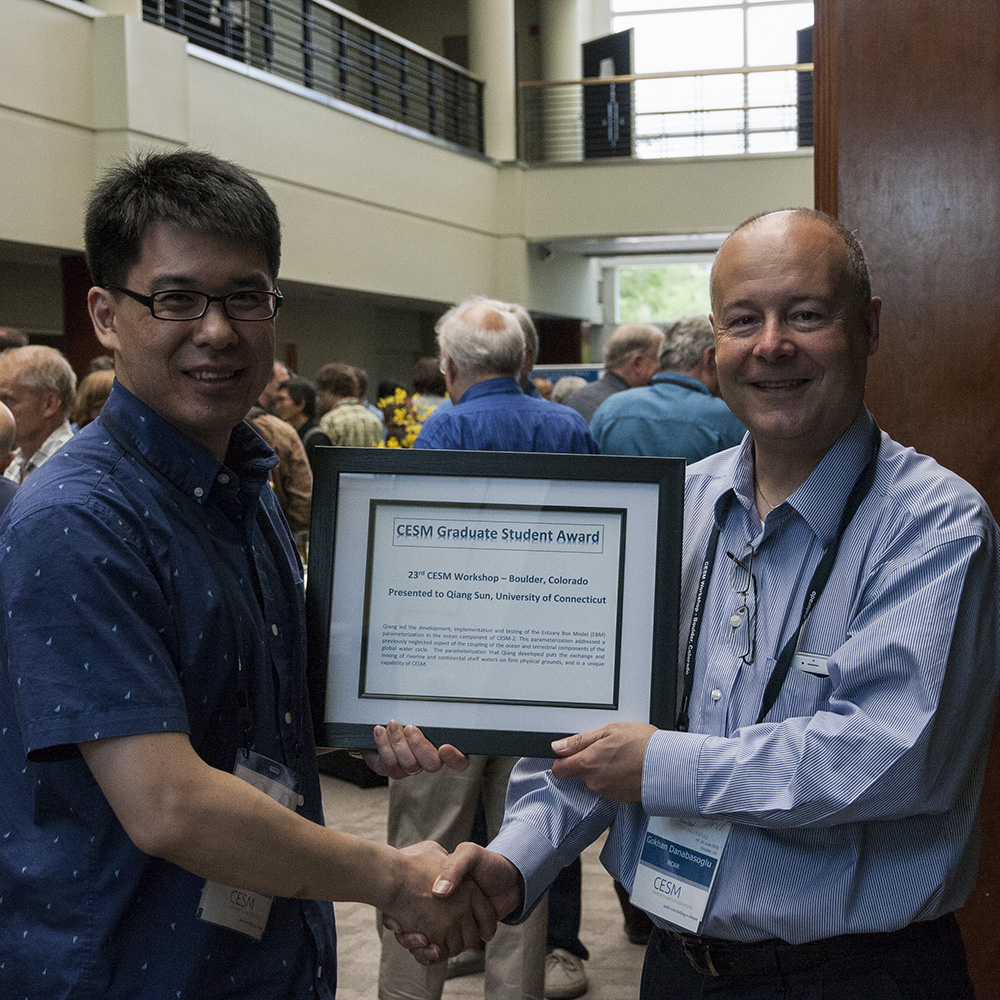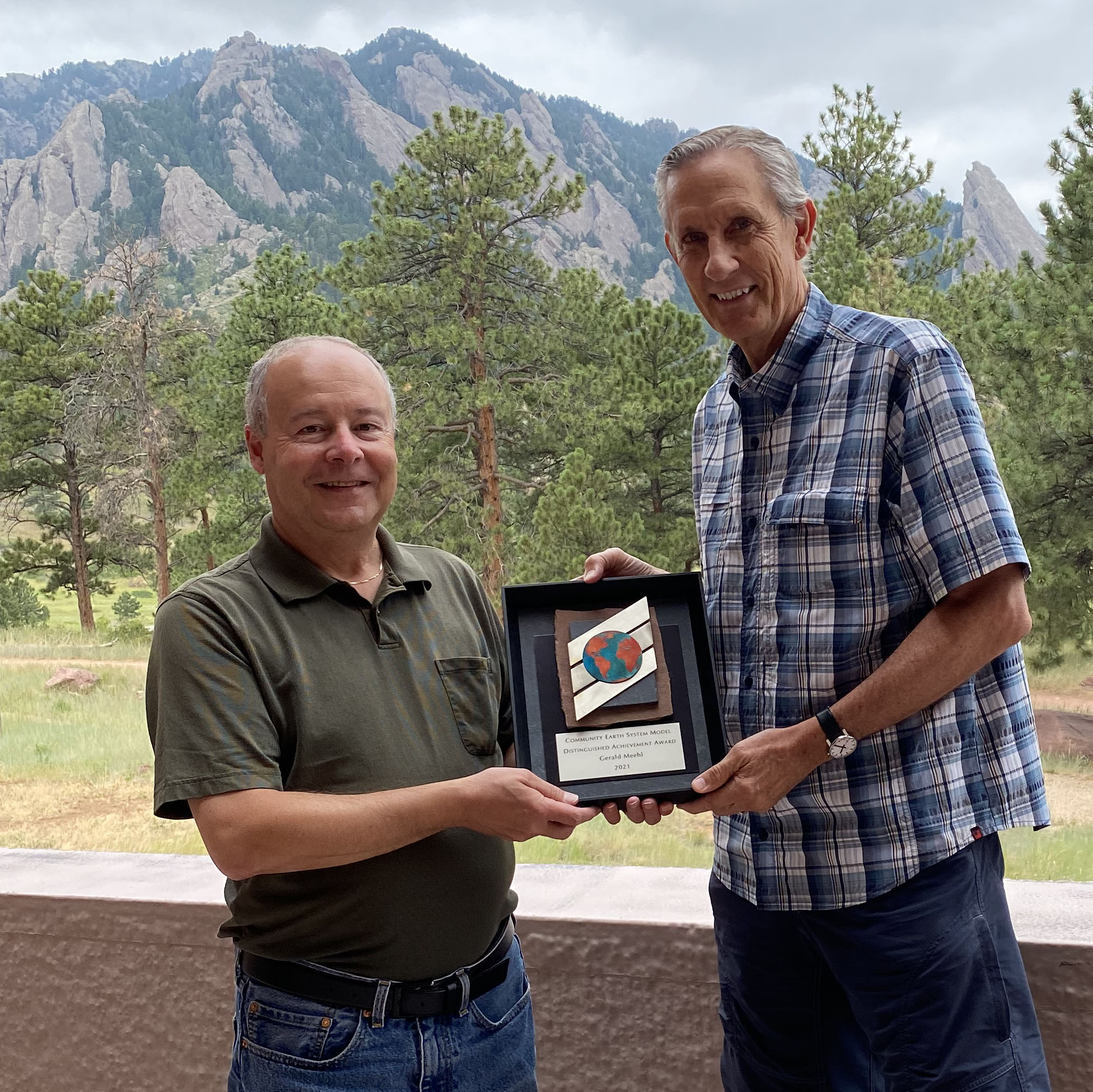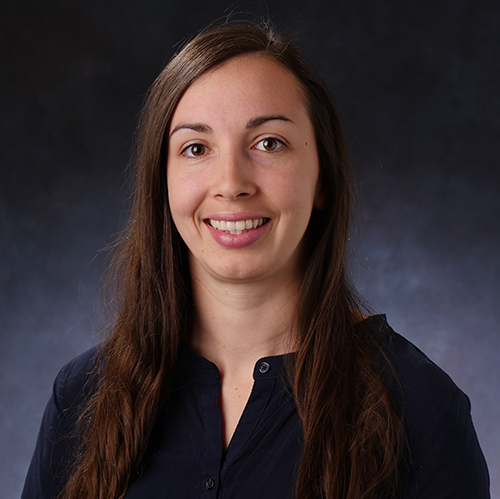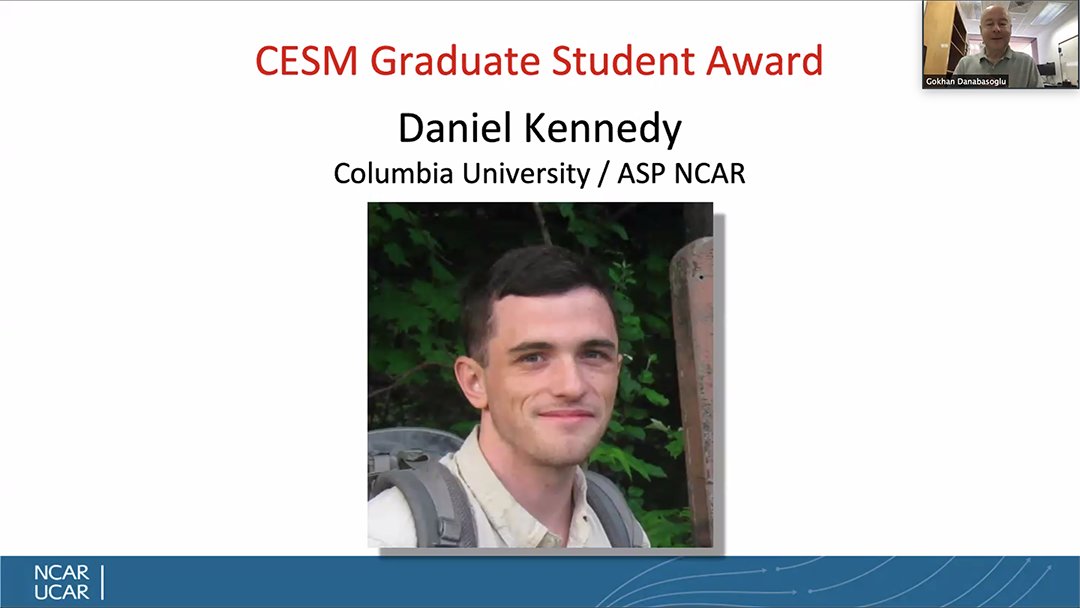CESM Awards

CESM Distinguished Achievement Award
Keith Lindsay
Keith was nominated for the 2019 CESM Distinguished Achievement Award for his sustained scientific and technical contributions to CESM. Keith has been THE central figure in implementing an interactive carbon cycle in CESM, thus facilitating the transition from a physical climate model to an Earth System model. He has served as the co-chair of the Biogeochemistry working group for many years, acting as a liaison and coordinator between the marine, terrestrial and atmospheric scientist involved in carbon cycle science with CESM...

CESM Workshop Graduate Student Award
Marysa Laguë
Marysa is a Ph.D. candidate in Atmospheric Sciences at the University of Washington. Marysa’s research seeks to understand how the atmosphere responds to perturbations in the land surface, what surface processes contribute most to the atmosphere, and how land-atmosphere coupling varies regionally...
Adam Herrington
Adam is a Ph.D. student in the School of Marine and Atmospheric Sciences at Stony Brook University (SBU). He spent some time at NCAR through an Advanced Study Program Graduate Student Fellowship working with Peter Lauritzen. Adam’s research focuses on understanding the convergence characteristics of global models...

CESM Distinguished Achievement Award
Bill Large
Dr. Large played a seminal role in establishing the CESM project and, through his service roles, has figured critically in the project's development into an internationally recognized platform for earth system modelling. His scientific contributions figure prominently in CESM as used today. These include the design and development of the flux coupler and bulk formulae, the development of the K-Profile parameterization for oceanic vertical mixing, and the development of atmospheric data sets for forcing ocean and sea-ice models...

CESM Workshop Graduate Student Award
Qiang Sun
Qiang Sun is a graduate student in the Department of Marine Sciences at the University of Connecticut. Qiang led the development, implementation and testing of the Estuary Box Model (EBM) parameterization in the ocean component of CESM-2. This parameterization addressed a previously neglected aspect of the coupling of the ocean and terrestrial components of the global water cycle. Estuaries are important in the mixing of water properties in the coastal ocean and in setting the stratification in the nearshore environment...
CESM Distinguished Achievement Award
Cecile Hannay & Richard Neale
Rich and Cecile have been serving as the AMWG co-chair and science liaison, respectively, for many years. In these roles, they have made significant contributions to CAM model developments and have directed the overall CAM activities for many years. Their tireless efforts have increased the reliability, accessibility, and usability of CAM and CESM more generally by the scientific community. They are true community scientists and regularly volunteer for activities that enhance the overall CESM project...
CESM Workshop Graduate Student Award
Leo van Kampenhout
The contribution of the two major ice sheets (Antarctica, Greenland) to future sea level rise, especially after 2100, is still highly uncertain, as large feedbacks exists between these ice sheets and the rest of the globe (ocean, atmosphere). In his work, Leo van Kampenhout attempts to improve the representation of ice sheets in CESM, with the aim of directly solving the mass balance...
2016 - Clara Deser and Jennifer E. Kay
In addition to the regular releases of CESM model versions, the Large Ensemble (LE) represents one of NCAR's most significant contributions to the US climate research community. The multi-member ensemble of historical and future forcing scenario simulations has proven to be a rich resource for climate and climate change studies...
[Read More]
2015 - Keith Moore
Keith Moore (University of California at Irvine) has been a key member of the Biogeochemistry Working Group for over 10 years. In the early 2000's he, Scott Doney and Keith Lindsay designed and assembled the first version of the biogeochemistry component of the ocean model. Keith Moore had worked on several of the parameterizations that were incorporated into this first version of the component. He has been involved in all further developments of the component, and has written many papers using this component...
[Read More]
2014 - Marika Holland
Marika’s contributions to the CESM project span 15 years and several versions of the model. Most recently, she served an extended term as the CESM Chief Scientist, helping to shepherd various versions of CESM1 development and inclusion of the model in the recent IPCC Fifth Assessment Report. This progress has been especially noteworthy, because it was achieved during a time of increasing budgetary pressures. After serving a standard two-year term, Marika demonstrated her commitment to the project by selflessly agreeing to remain Chief Scientist for another several months, until a successor could be found...
[Read More]
2013 - Phil Rasch
Phil Rasch, from the Department of Energy Pacific Northwest National Laboratory, is the recipient of the 2013 CESM Distinguished Achievement Award. Phil has made numerous and significant contributions to the development of the community atmosphere model of the CESM project over many years. These contributions actually pre-date the release of the first version of the CCSM. In the 1980s and 1990s, while Phil was a scientist at NCAR, he was involved in the development of the CCM atmospheric models. The first version of CCSM, the Climate System Model 1.0 (CSM1.0) was released in June 1996 and incorporated CCM3.0 as the atmospheric model component. Phil has continued to be active in the development of the atmospheric component for all subsequent CSM, CCSM, and now CESM models...
[Read More]
2012 - Bill Lipscomb
Bill Lipscomb is the recipient of the 2012 CESM Distinguished Achievement Award. Bill's contributions to the CESM project began over ten years ago when he joined the Climate, Ocean and Sea Ice Modeling (COSIM) team at Los Alamos National Laboratory as a Postdoctoral Researcher. In his initial years at Los Alamos, Bill made notable improvements to the Los Alamos sea ice model, which is the sea ice component of CESM. In more recent years, Bill has established and led the effort to incorporate a land ice component into CESM. Through Bill's inventive and hard work in this area, the CESM project is now making exciting contributions to our understanding of ice sheet loss and sea level rise...
[Read More]
2011 - David Williamson
David Williamson is the recipient of the 2011 CESM Distinguished Achievement Award. David Williamson is long overdue recognition for his significant contributions to CESM and community modeling at NCAR. His science contributions are particularly noteworthy as more often than not they were breakthrough, innovative research activities for global modeling in general and not just for CESM. Dave is one of the pioneers of the present-day discretization methods for the atmospheric primitive equations used in CESM. He was also heavily involved in addressing the problems of discretization on a sphere exploring the use of geodesic or hexagonal grids.
[Read More]
2010 - Mariana Vertenstein
Mariana Vertenstein is the recipient of the 2010 CESM Distinguished Achievement Award. Mariana has been a member of the CESM Software Engineering Group (CSEG) since its inception and has led and managed the team since 2004. Over this period she has instigated and overseen significant improvements to the model's infrastructure capabilities that now permit new flexibility and extensibility to address the challenges involved in earth system modeling.
[Read More]
2009 - Gokhan Danabasoglu
Gokhan Danabasoglu is the recipient of the 2009 CCSM Distinguished Achievement Award. Gokhan has been instrumental in developing every version of the ocean component, starting from CCSM1. With Gokhan as co-chair of the Ocean Working Group, the ocean model component for CCSM4 was delivered on time, with everything incorporated as planned and more. It is our opinion that no one has been more key to this, and past versions of the ocean model than Gokhan.
[Read More]
2008 - CCSM Land Model Working Group
CCSM Land Model Working Group recently received this award for their cooperative work in producing the CLM3.5 version of the land component. This version is a considerable improvement over CLM3.
2007 - Inez Fung, UC Berkeley
Inez Fung, a climate expert and NERSC user, recently received the 2007 CCSM Distinguished Achievement Award for her role in shaping a modeling system that enables scientists to carry out comprehensive analyses of the earth's climate.
2006 - Byron Boville, NCAR-CGD
Byron Boville made fundamental contributions to understanding Earth's atmosphere and climate, while devoting substantial effort to model development. In May he was given the 2006 CCSM Distinguished Achievement Award in recognition for Byron's critical leadership of the CCSM project at its inception, for his numerous contributions to the design and physics of the atmospheric model, and for his initiative in the collaborative development of the Whole Atmosphere Community Climate Model (WACCM), where WACCM represents a major move toward realizing NCAR's strategic goal of developing a comprehensive Earth System Model.
2005 - Jay Fein, NSF and Dave Bader, DOE
Jay Fein and Dave Bader were recipients of this award as representatives of the CCSM sponsoring funding agencies - the National Science Foundation (NSF) and the Department of Energy (DOE). These individuals had assured strong funding for CCSM development from these agencies over the past several years.
2004 - Peter Gent, NCAR-CGD
Peter Gent earned this award for his cumulative 13 years of service on the Scientific Steering Committee, as CSM co-chair, as chairman of the Ocean Model Working Group, and for his scientific achievements based upon CSM1, CCSM2, and CCSM3.
2003 - Jeff Kiehl, NCAR-CGD
Jeff Kiehl was the first chairman of the SSC between July 2001 and June 2003 He had also contributed strongly to the development of the radiation codes in the atmospheric component of the CCSM.
2002 - Cecilia Bitz, UW and Elizabeth Hunke, LANL
Cecilia Bitz developed a state-of-the-art physical-numerical sea ice model that represents the ice mass balance in terms of a multi-category thickness distribution, and represents the vertical transfer of heat in terms of a multi-level temperature profile for each category of ice thickness.
Elizabeth Hunke helped to develop a new elastic-viscous-plastic (EVP) model of sea-ice dynamics that incorporates an elliptical yield curve representing both shear and normal stresses in the deforming ice. This EVP implementation offers the potential for significant improvements in numerical efficiency when implemented on shared memory computer systems.
2001 - Jim Hack, NCAR-CGD
This award is in recognition of Jim Hack's many contributions to the CCSM development. In particular, he has led the effort to define the diagnostics system for evaluating various configurations of the atmospheric component of the CCSM.



